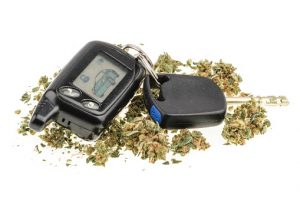 Indiana addresses the crime of operating a vehicle while intoxicated in Title 9, Article 30, Chapter 5. Within the relevant code section, Indiana describes operating while impaired in terms of the blood alcohol concentration levels of the driver. For example, if a driver has a BAC of between .08 and .15, the driver can be found guilty of a Class C misdemeanor offense. The same statute also makes it a criminal offense to operate a vehicle with a controlled substance in his body.
Indiana addresses the crime of operating a vehicle while intoxicated in Title 9, Article 30, Chapter 5. Within the relevant code section, Indiana describes operating while impaired in terms of the blood alcohol concentration levels of the driver. For example, if a driver has a BAC of between .08 and .15, the driver can be found guilty of a Class C misdemeanor offense. The same statute also makes it a criminal offense to operate a vehicle with a controlled substance in his body.
In Indiana, like most states, the law is less clear regarding drugged driving as compared with operating under the influence of alcohol. While Indiana law is very detailed and precise on what specific blood alcohol limits can mean for criminal charges, the law is not very detailed on the types or amounts of drugs a person must have in their system to be considered impaired by drugs.
This is the case in many states, which have to grapple with new questions about drugged driving as drugged driving becomes more common due to widespread changes in how cannabis is viewed under the law.
States, including Indiana, will have to work on refining their policies regarding drugged driving as the number of drivers testing positive for drugs increases significantly. States need to better understand the actual risks presented by drugged driving and define clear protocols for imposing consequences on drivers. Unless and until that happens, drugged drivers may get unfair outcomes and will need to make certain they defend their interests when charged with a criminal offense.
Drugged driving is becoming a bigger concern because of a substantial increase in drugged drivers. USA Today reported recently that regulators are growing worried about a rise in drugged driving.
According to USA Today, a survey of 11,000 weekend drivers at nighttime found that 15.1 percent had illegal drugs in their system in 2013 and 2014. This is an increase compared with in 2007, when around 12.4 percent had drugs in their systems when stopped on a weekend night. Marijuana was largely responsible for the increase in drivers testing positive for drugs in their system. In 2013, 12.6 percent of drivers tested positive for marijuana. In 2007, by comparison, just 8.6 percent of drivers tested positive for cannabis products.
The number of people who test positive for drugs is probably going to continue to go up, especially since more states are legalizing marijuana for recreational purposes and for medicinal purposes. Unfortunately, as USA Today indicates, researchers aren't sure what the connection drugged driving has in terms of increasing accidents.
While there has been an increase in the number of drivers in fatal crashes testing positive for drugs, researchers have cautioned the connection between drugs and fatal car accidents is not as significant as the connection between drinking and driving. States need to know more so they can craft better drugged driving laws so the consequences are clear and so the penalties actually fit the crime.
